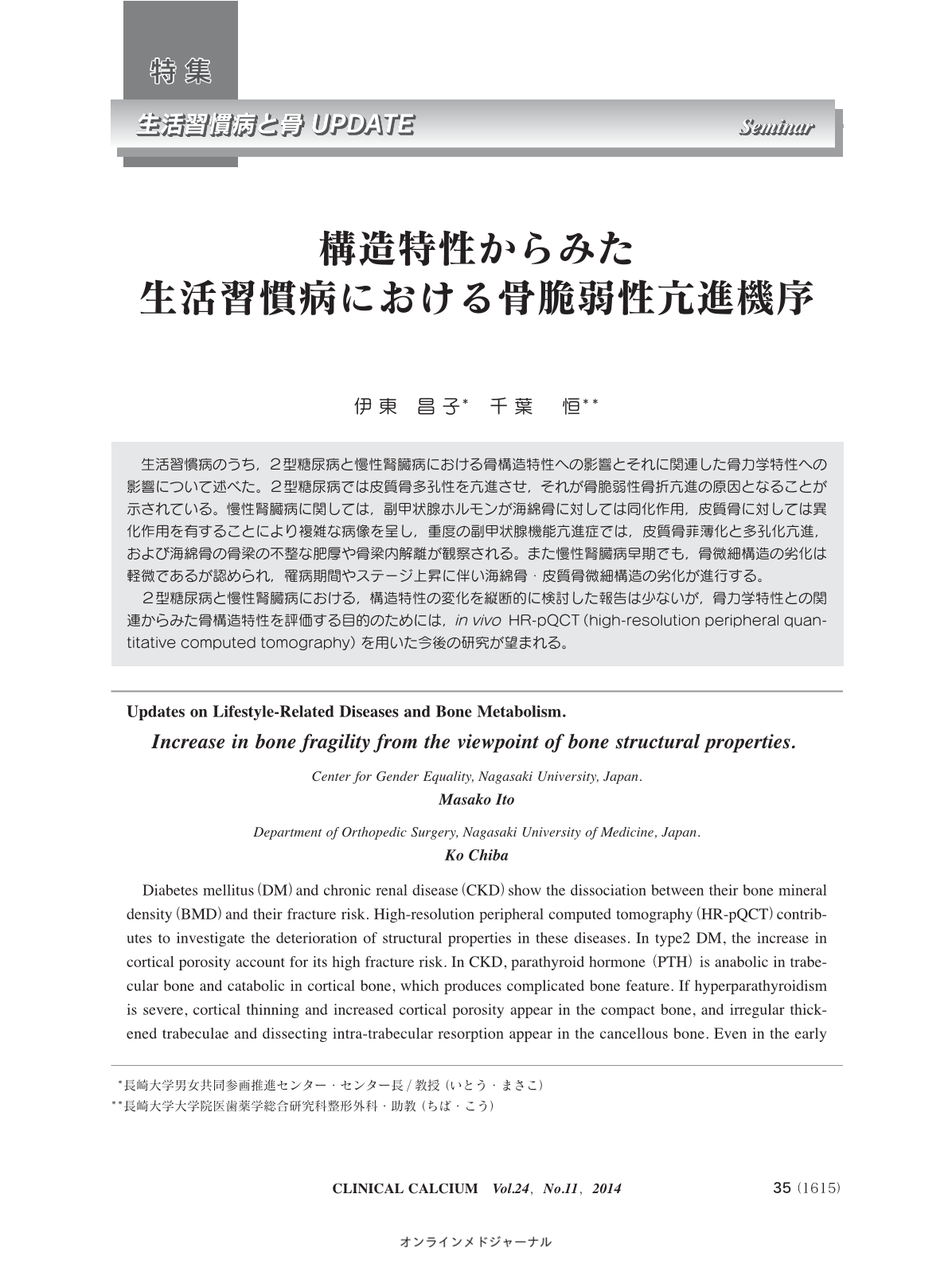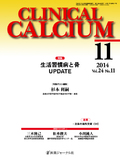Japanese
English
- 有料閲覧
- Abstract 文献概要
- 1ページ目 Look Inside
- 参考文献 Reference
生活習慣病のうち,2型糖尿病と慢性腎臓病における骨構造特性への影響とそれに関連した骨力学特性への影響について述べた。2型糖尿病では皮質骨多孔性を亢進させ,それが骨脆弱性骨折亢進の原因となることが示されている。慢性腎臓病に関しては,副甲状腺ホルモンが海綿骨に対しては同化作用,皮質骨に対しては異化作用を有することにより複雑な病像を呈し,重度の副甲状腺機能亢進症では,皮質骨菲薄化と多孔化亢進,および海綿骨の骨梁の不整な肥厚や骨梁内解離が観察される。また慢性腎臓病早期でも,骨微細構造の劣化は軽微であるが認められ,罹病期間やステージ上昇に伴い海綿骨・皮質骨微細構造の劣化が進行する。 2型糖尿病と慢性腎臓病における,構造特性の変化を縦断的に検討した報告は少ないが,骨力学特性との関連からみた骨構造特性を評価する目的のためには,in vivo HR-pQCT(high-resolution peripheral quantitative computed tomography)を用いた今後の研究が望まれる。
Diabetes mellitus(DM)and chronic renal disease(CKD)show the dissociation between their bone mineral density(BMD)and their fracture risk. High-resolution peripheral computed tomography(HR-pQCT)contributes to investigate the deterioration of structural properties in these diseases. In type2 DM, the increase in cortical porosity account for its high fracture risk. In CKD, parathyroid hormone(PTH)is anabolic in trabecular bone and catabolic in cortical bone, which produces complicated bone feature. If hyperparathyroidism is severe, cortical thinning and increased cortical porosity appear in the compact bone, and irregular thickened trabeculae and dissecting intra-trabecular resorption appear in the cancellous bone. Even in the early stage of CKD, the bone microstructural changes are observed. For further investigation of the structural changes in relation to biomechanical properties in type2 DM and CKD, the longitudinal studies are required using in vivo HR-pQCT.



